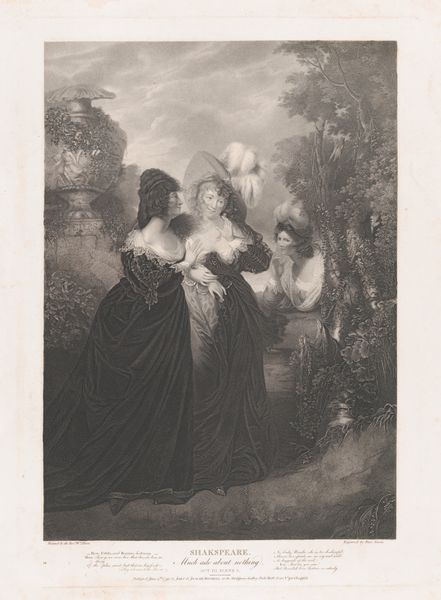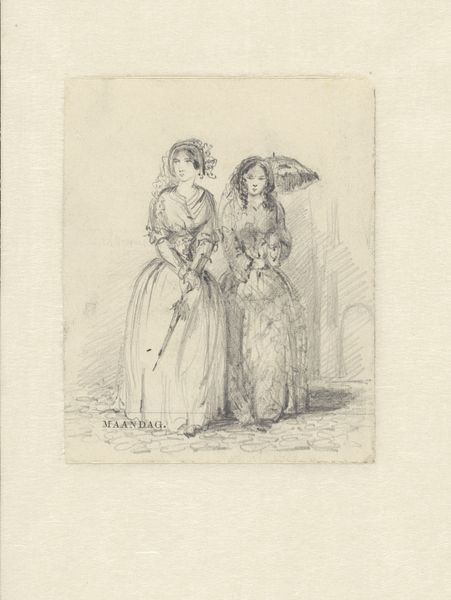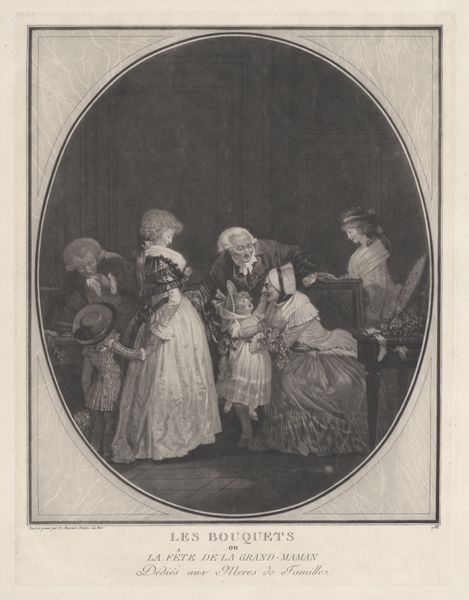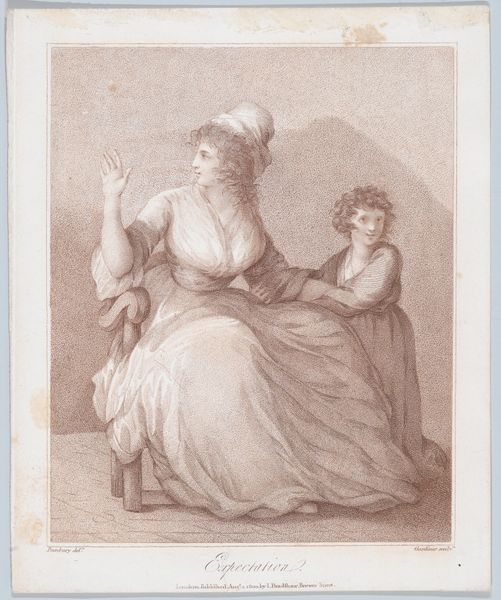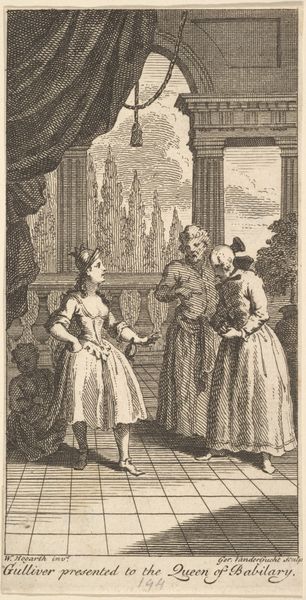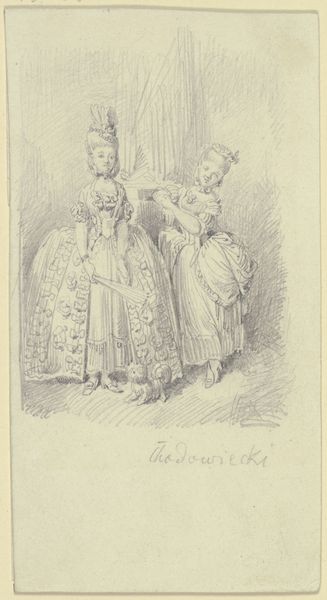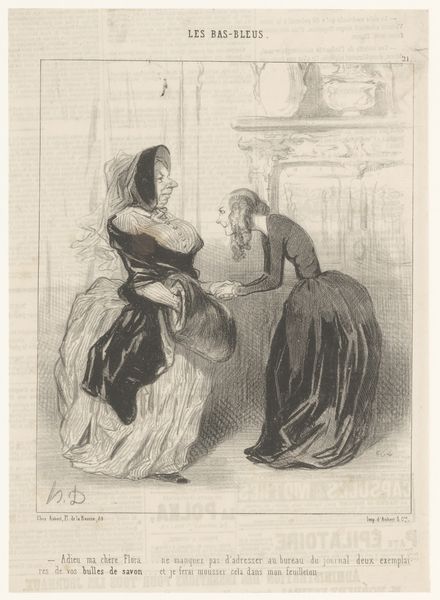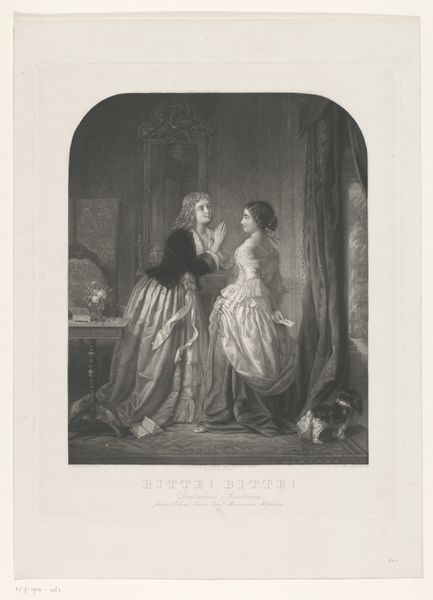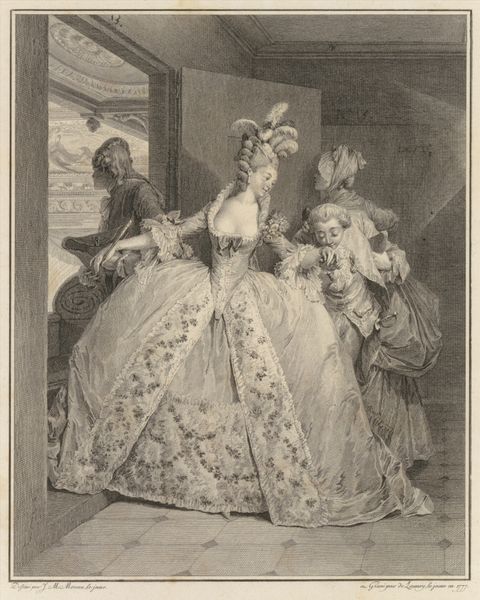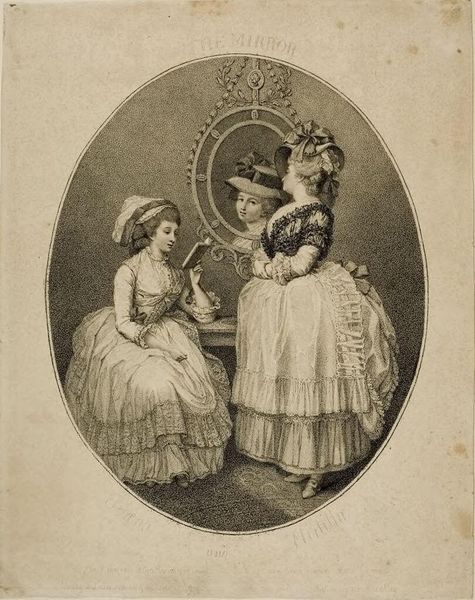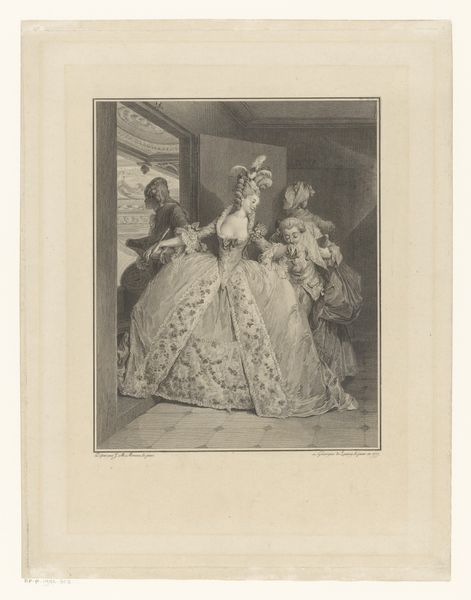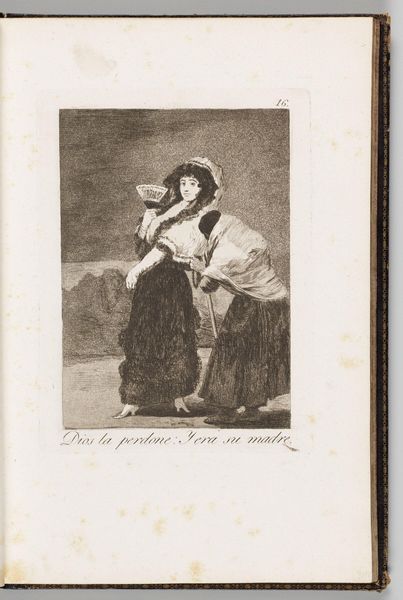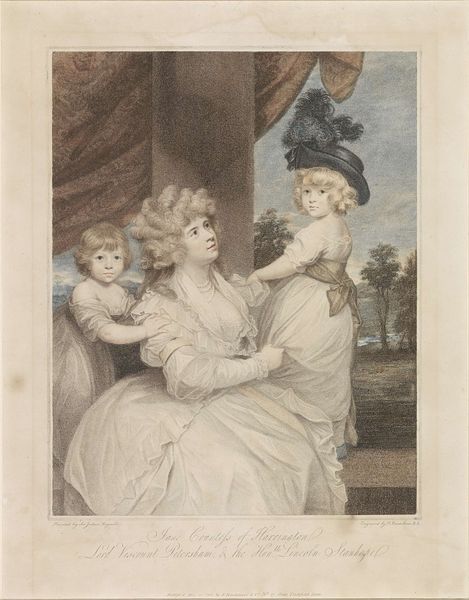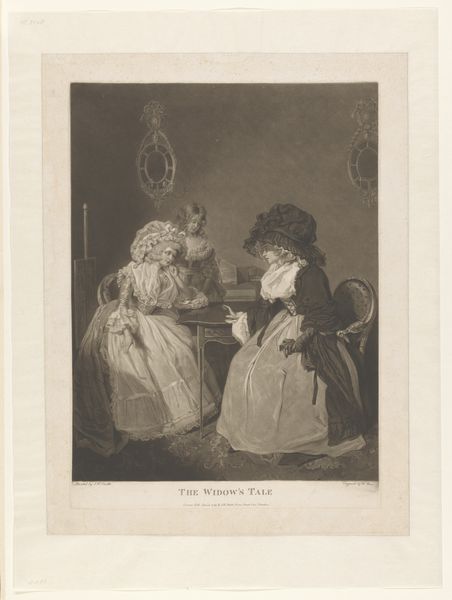
Mrs. Ford and Mrs Page (Shakespeare, Merry Wives of Windsor, Act 2, Scene 1) 1793
0:00
0:00
drawing, print, engraving
#
drawing
#
narrative-art
# print
#
figuration
#
romanticism
#
line
#
genre-painting
#
history-painting
#
academic-art
#
engraving
Dimensions: Plate: 25 1/4 × 18 in. (64.2 × 45.7 cm) Sheet: 27 1/16 × 19 1/2 in. (68.7 × 49.5 cm)
Copyright: Public Domain
Curator: What a delightful scene! This is Robert Thew's engraving from 1793, titled "Mrs. Ford and Mrs. Page (Shakespeare, Merry Wives of Windsor, Act 2, Scene 1)." It's based, of course, on a moment from Shakespeare's comedy. Editor: The image immediately strikes me as both intimate and a bit secretive. There's a tangible sense of shared excitement, even conspiracy, in their postures. The shading is so meticulous. Curator: Indeed! Look at the way Thew uses light and shadow to define the characters. It emphasizes their status and the specific feminine performance required within that social strata. Their fashion speaks volumes; the extravagant hats, the ruffled lace – clear markers of bourgeois affluence that’s playing out amid this early example of narrative genre. What is the gendered access afforded to Mrs Ford and Page that allows them to conspire and to manipulate a plot and character that ultimately restores their status? Editor: Precisely! It's more than just costuming; those elements carry profound cultural associations. The hats alone—those extravagant bonnets almost like shields – signify protection and containment but the lace also is clearly evocative and perhaps representative of the trappings of seduction. Their shared glance and physical closeness suggests an intriguing story. Look at the flowers near Mrs. Page -- are these tokens? Curator: A question that's open to interpretation, isn't it? We know from the play they're reading a deceitful letter together – from Falstaff. We could see these two powerful women plotting. There are dynamics of class and status to consider as well; a 1793 audience would absolutely see the subtleties of power on display. Editor: I see those subtle clues in the iconography, and the garden scene. Nature versus artifice; innocence and experience colliding within that shared space…all contributing to the mood, yes? And look how precisely those folds in their dresses mimic each other almost acting like they are reflections? Curator: An intentional move, I think! A reinforcement of their alignment within this specific moment in Windsor. The entire piece reveals a fascination with representation. Editor: Looking closer, what an artful print! This deepens the appreciation of visual narratives across time. Curator: Exactly. There’s enduring value in revisiting the play through Thew’s perspective on the representation of class and gender roles on stage at that historical point in time.
Comments
No comments
Be the first to comment and join the conversation on the ultimate creative platform.
